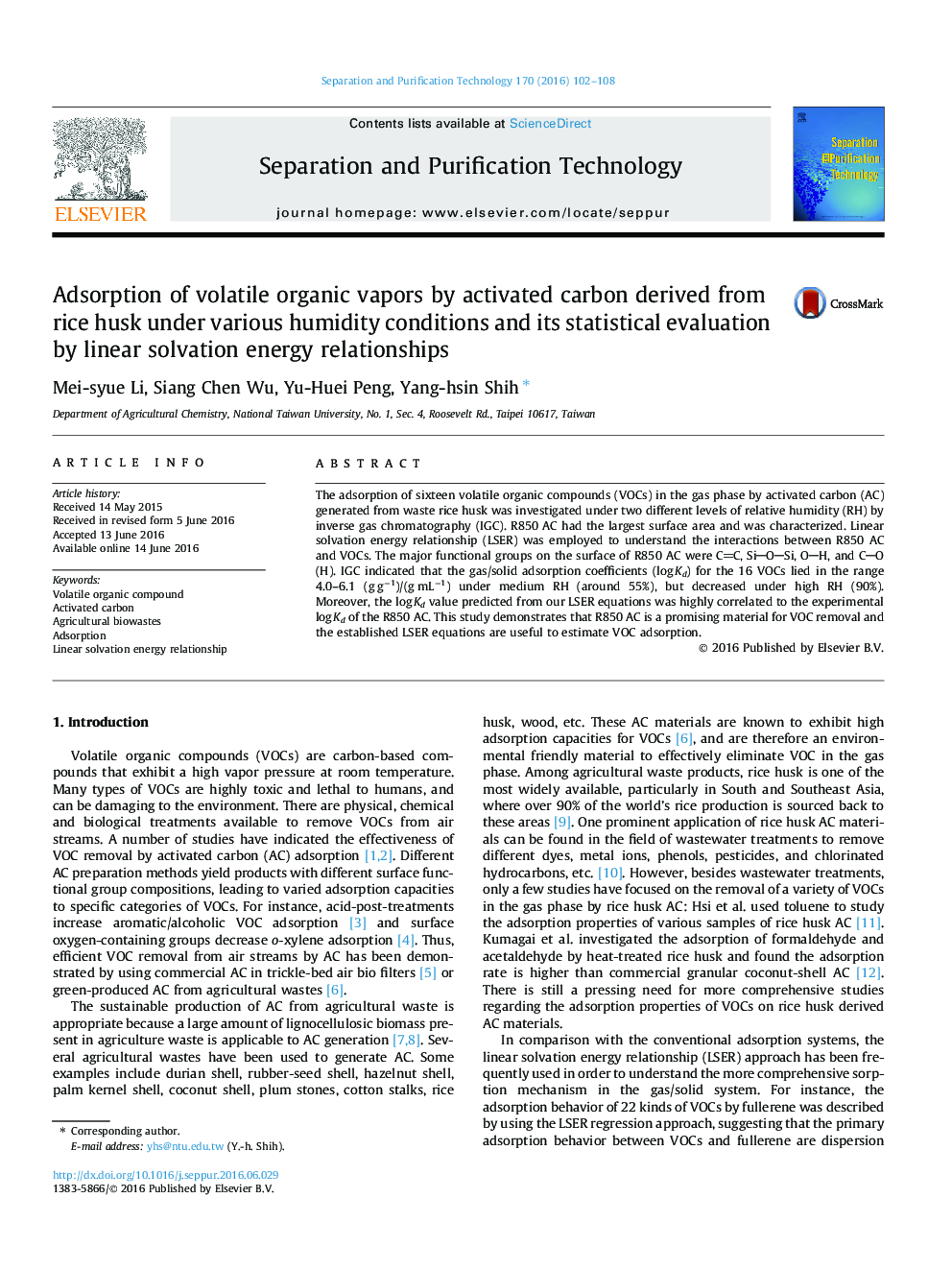| Article ID | Journal | Published Year | Pages | File Type |
|---|---|---|---|---|
| 639808 | Separation and Purification Technology | 2016 | 7 Pages |
•Biowaste of rice husk was transformed to activated carbon with CO2 at 1123 K.•CO2 activation enhanced the oxygen content and formed oxide functional groups.•The rice-husk AC exhibits great adsorption capacities for a variety of VOC vapors.•Gas/solid adsorption ability can be estimated by our established LSER equations.•Biowaste AC and LSER approach would be promising as a VOC removal technique.
The adsorption of sixteen volatile organic compounds (VOCs) in the gas phase by activated carbon (AC) generated from waste rice husk was investigated under two different levels of relative humidity (RH) by inverse gas chromatography (IGC). R850 AC had the largest surface area and was characterized. Linear solvation energy relationship (LSER) was employed to understand the interactions between R850 AC and VOCs. The major functional groups on the surface of R850 AC were CC, SiOSi, OH, and CO(H). IGC indicated that the gas/solid adsorption coefficients (log Kd) for the 16 VOCs lied in the range 4.0–6.1 (g g−1)/(g mL−1) under medium RH (around 55%), but decreased under high RH (90%). Moreover, the log Kd value predicted from our LSER equations was highly correlated to the experimental log Kd of the R850 AC. This study demonstrates that R850 AC is a promising material for VOC removal and the established LSER equations are useful to estimate VOC adsorption.
